These creatures are known to cause significant damage to a variety of plants, turning a once vibrant garden into a landscape of half-eaten leaves and stems.
Lawn Alternatives in Australia: Low Maintenance and Eco-Friendly Options
As the world becomes more environmentally conscious, the trend towards lawn alternatives is gaining momentum, particularly in Australia. The traditional well-manicured, green grass lawns are being reimagined as Australians increasingly seek out low-maintenance and eco-friendly options for their outdoor spaces.
Whether you want to help the biodiversity crisis, or you’re just sick of mowing your lawn every couple of weeks, this article will help you to think outside the box and explore the variety of eco-friendly and no-mow lawn alternatives available.
Whether you’re looking for options that look like turf but don’t require regular mowing, flowering plants to replace turf, or inspiration to completely redesign your turfed areas, you’ll find information and inspiration below.
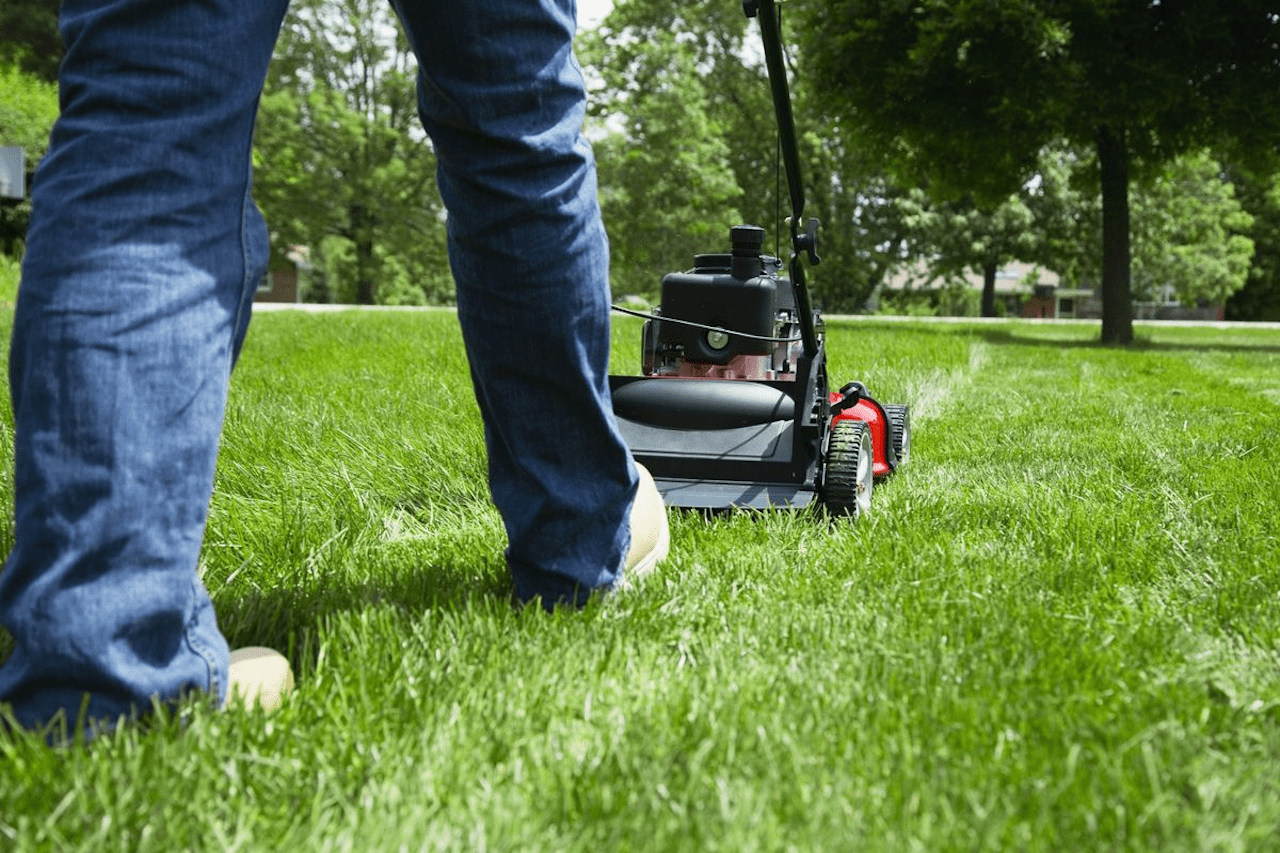
Devil’s Advocate: What Grass Does Well
Despite the rising popularity of turf alternatives, it’s important to acknowledge why turfgrass has traditionally been a go-to choice for recreational and amenity purposes. Turfgrass has several qualities that make it an appealing option.
Its growth habit, for instance, is one of its defining features. Turfgrass grows horizontally using stolons and rhizomes, creating a thick mat that’s ideal for activities such as sports and picnics.
On top of that, grass species have a unique response to mowing compared to other types of plants. There are stem cells all along the grass blade which can spring into action and start growing new plant material right from where they were cut.
In most plants, new growth after a cut can only occur through lateral buds further back along the stem. That means you’ll have dead wood accumulating every time you cut them.
Grass is also resilient in its springiness, meaning that it bounces back after you walk or drive over it. On certain turf alternatives like herbs, the branches will snap and die back without being able to regenerate from the exact point of damage, leading to accumulated dead wood.
For these reasons, turf has dominated the amenity landscape for several hundred years.
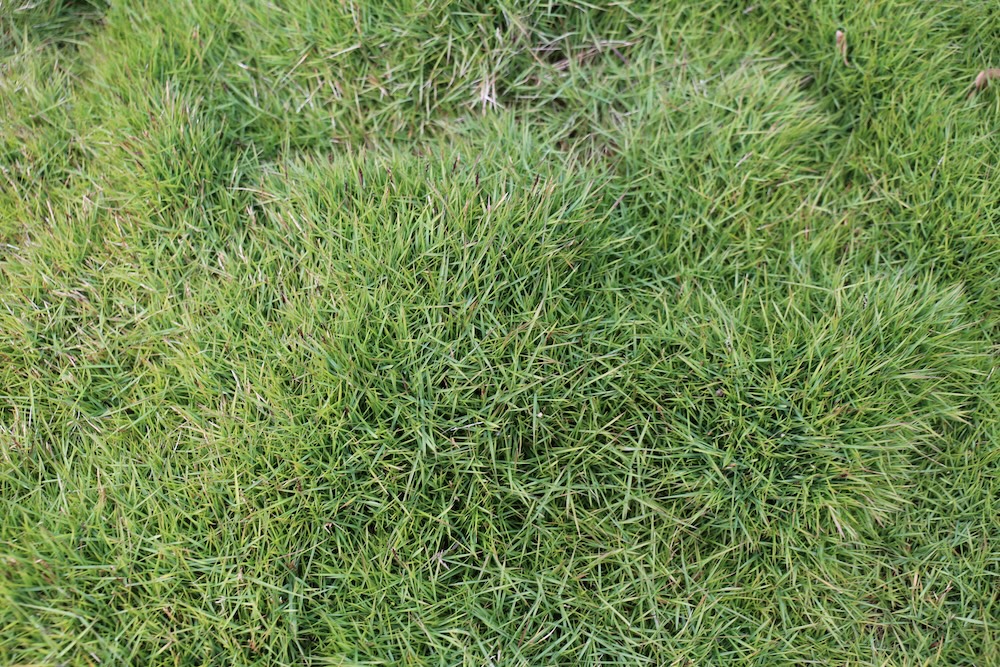
The Shift Towards Lawn Alternatives
However, the tide is shifting. The appeal of a perfectly manicured lawn is beginning to wane as people realise the time, effort, and resources required to maintain it. Not only is it time-consuming, but traditional fertilisation and pest treatments can have a significant environmental impact.
The use of pesticides and artificial fertilisers can harm biodiversity, and the equipment used for mowing, edging, and blowing contribute to air and noise pollution. In contrast, lawn alternatives offer numerous benefits.
They often require less maintenance, reduce the need for harmful chemicals, and support biodiversity by providing habitats for local fauna. Before we move on, I just want to put a disclaimer here. While chemical applications can be harmful to the environment, that doesn’t make grass evil.
Grasses often have extraordinary root systems that can prevent erosion and exude all sorts of good stuff to feed soil organisms, which in turn feed a variety of birds and animals. And if you’re mulch mowing instead of catching the clippings, you’re providing even more goodness to your soil.
Zen Grass Zoysia: A Superior No-Mow Choice
A leading choice for no-mow lawns is Zen Grass Zoysia. This variety, while technically a grass species, behaves more like a lawn alternative. It’s ideal for Australian climates, offering a hardy solution that can withstand both drought and frost conditions. The benefits of Zen grass extend beyond its low maintenance requirements.
Zen grass forms a dense mat that chokes out most weeds, reducing the need for chemical weed killers. It’s also disease and pest resistant, further minimising the need for harmful pesticides. When you peel back the grass, you’ll find a thriving ecosystem of small critters and dark, rich soil, indicative of healthy soil biodiversity.
Kick a footy on this turf alternative, or sit back and watch the magpies picking grubs from your “lawn”.
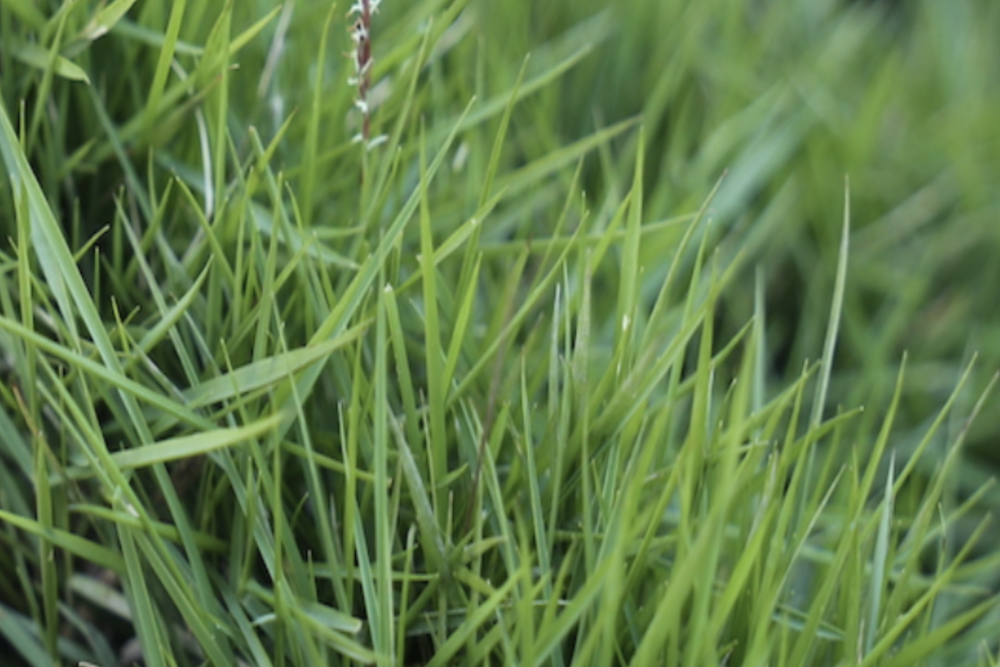
Liriopes as a Turf Alternative
Another turf alternative to consider is liriope, which are plants that look a lot like grass to the untrained eye. Liriopes are an excellent turf alternative due to their robust nature and attractive appearance that offer a unique texture and colour to your garden.
In particular, Isabella® Liriope stands out among other liriope varieties, with its beautiful pink flowers. This cultivar is known for its compact growth habit and year-round deep green foliage. It’s hardy, drought-tolerant, and can thrive in a wide range of soil conditions, making it an excellent choice for Australian gardens.
Mow it once a year if you’d like to tame its natural habit of strappy leaves, or let it keep its natural strappy habit. This plant has a defined maximum height of around 40cm high, so it won’t go completely wild like most turf varieties.
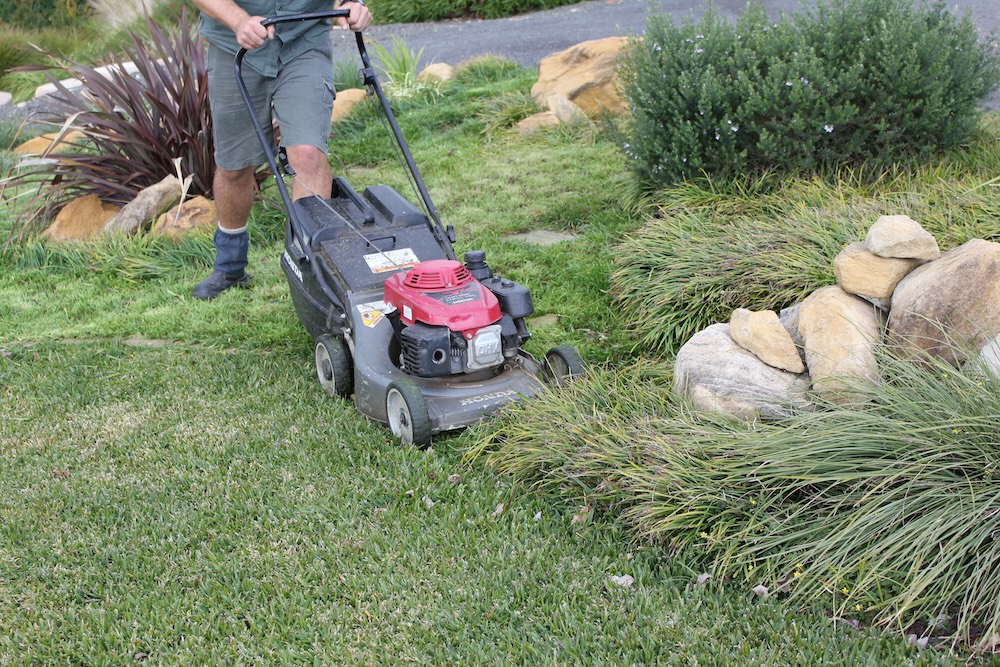
Chamomile Turf: Calm-O-Mile Matricaria chamomilla
Calm-O-Mile chamomile is another alternative well-suited for turfed areas. It’s a highly aromatic plant that adds an additional sensory dimension to your garden. This low-growing perennial forms a dense, mat-like ground cover that helps suppress weeds and reduce soil erosion.
The care requirements for this chamomile cultivar are minimal. It does well in full or sun or partial shade, needs occasional watering during dry periods and prefers well-drained soil. It can tolerate light foot traffic and only needs to be mowed a few times a year, making it a truly low-maintenance lawn option.
Moreover, Calm-O-Mile chamomile contributes to the aesthetic and biodiversity of a garden. Its feathery leaves and daisy-like flowers provide visual interest, while its nectar-rich flowers attract beneficial insects, aiding in the support of local biodiversity.
Unlike traditional chamomile, which tends to grow too tall to be truly useful as a lawn alternative, Calm-O-Mile chamomile forms a dense, mat-like ground cover that effectively suppresses weeds and reduces soil erosion. This makes it an excellent choice for areas where traditional lawn grasses struggle.
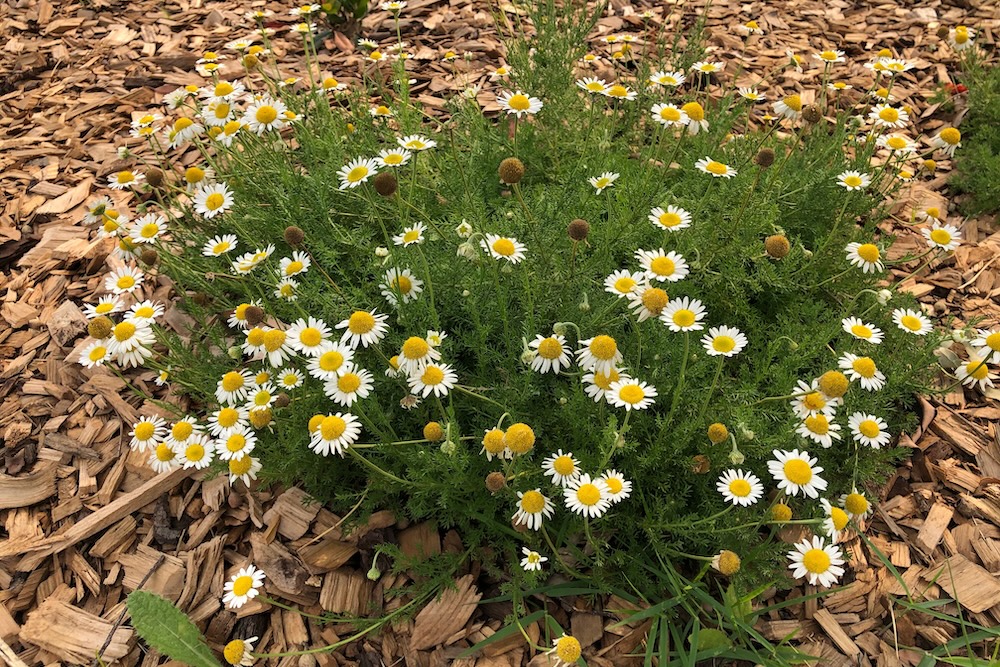
Double Gold Gazania
Double Gold Gazania is a vibrant low-maintenance option for those seeking a turf alternative. This hardy plant boasts stunning double-yellow flowers and silver-green foliage, adding a splash of colour to your outdoor space.
It’ll colonise bare patches in your garden without growing too quickly out-of-control, will out-compete weeds, and flowers for most of the year with twice as many blooms as other gazanias.
One of its key features is the sterile seeds it produces, which help prevent weeds from escaping into the natural environment. Gazanias are well-known for their weedy nature, so this option is an environmentally conscious choice.
However, if you’re looking for a plant that you can walk over from time to time, perhaps choose one of the other options mentioned above.
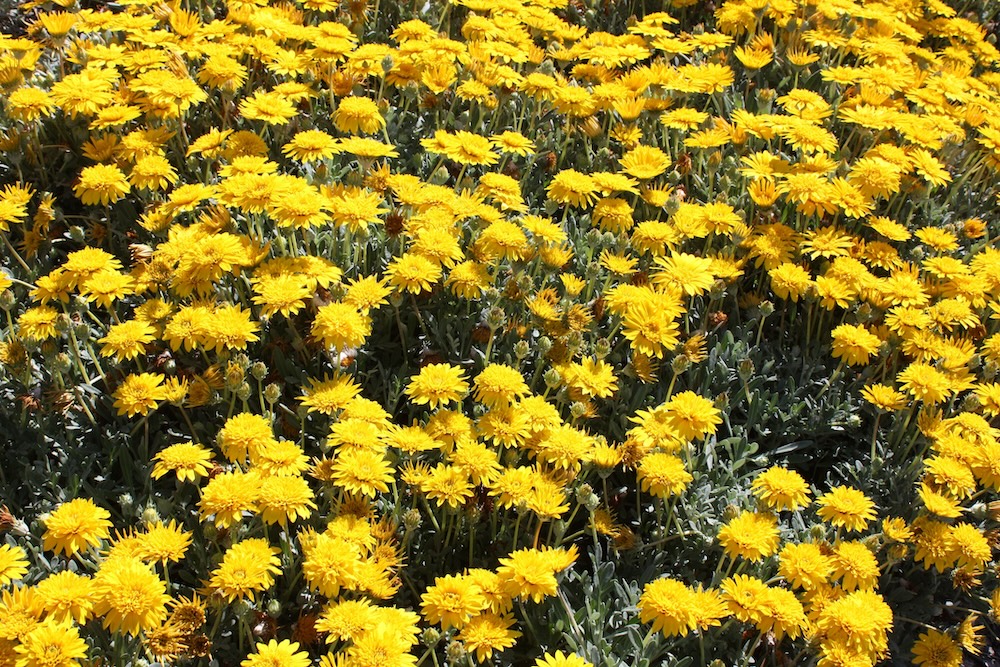
Replacing Turfed Areas with Wildlife or Amenity Gardens
Not every outdoor space needs to serve the same purposes as a turfed area, and can be replaced with all types of gardens. For example, many homeowners and landscape designers are choosing to replace turfed areas with wildlife or amenity gardens.
These gardens can provide refuge for local fauna and offer aesthetic appeal. While native plants are fantastic choices for these gardens, don’t overlook the value of exotic plants. Many non-native species can contribute to biodiversity, offering food and habitat for a variety of native insects, mammals, birds and other fauna.
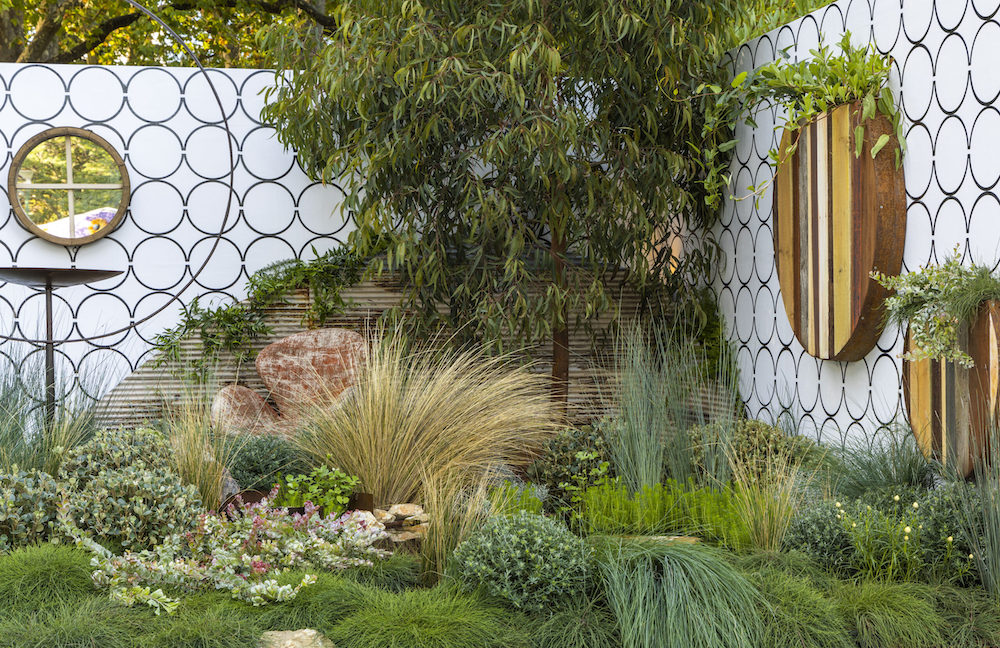
Creating an Edible Landscape
Another innovative approach to replacing traditional lawns is creating an edible landscape. Imagine walking out to your garden and picking fresh herbs, vegetables, or fruits and berries for your meals. Edible landscaping allows you to do just that.
This approach promotes sustainability, reduces your carbon footprint, and provides access to fresh produce right at your doorstep. Whether you’re growing a few strawberry plants or a full-fledged herb garden, edible landscapes are a practical and rewarding turf alternative.
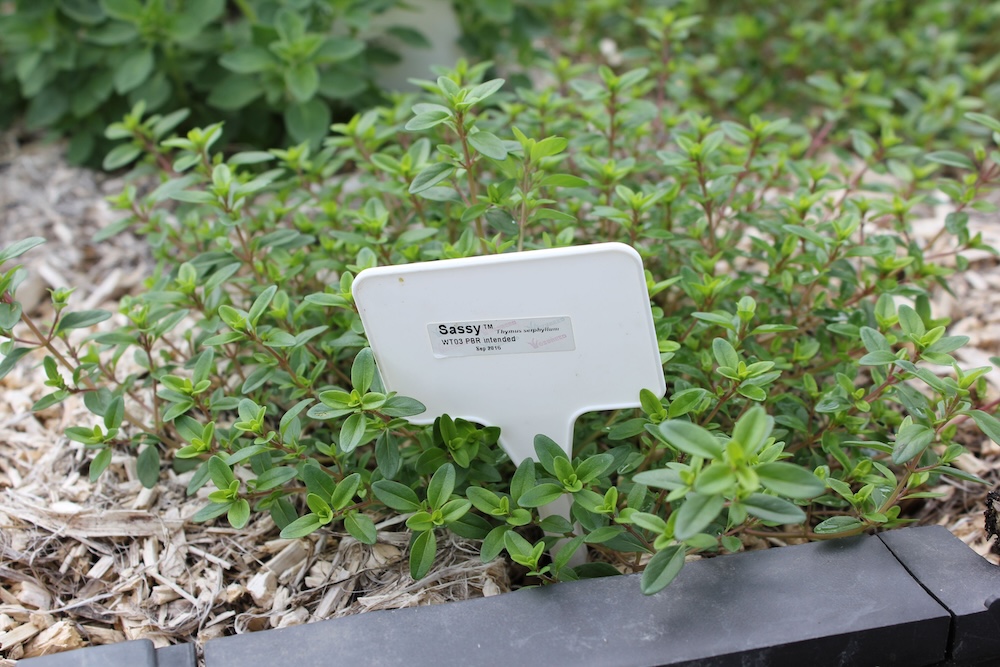
Weedy Lawns
You don’t have to get rid of your lawn for it to be eco-friendly.
Your neighbours might not like me suggesting this, but one innovative approach to feeding native pollinators is to allow weeds to colonise your lawn. Many common lawn weeds, such as dandelions, chickweed, and clover are all favourites among native pollinators. Interestingly, all of these weeds mentioned are also edible, provided they haven’t been urinated on by pets or wildlife.
Clover is a particularly beneficial plant to incorporate into your lawn as it not only feeds pollinators with their flowers, but simultaneously fix nitrogen in the soil. This encourages lush, green grass when the two plants are thriving together in your lawn.
While clover is edible, be aware of clover look-alikes because some members of the Fabaceae family are poisonous. And just be aware that flowering plants like weeds can attract honeybees in large numbers, which could pose a risk of stings, particularly to children.
No-Mow Trend
The no-mow lawn trend has gained popularity in the UK, where homeowners leave patches or entire lawns for weeds and wildflowers to grow unhindered. This approach encourages biodiversity and provides a unique aesthetic appeal that some people, not everybody, love.
However, while this concept works well in some parts of the world, it may not be as suitable in Australia due to concerns about snakes during warmer months. Additionally, no-mow lawns aren’t ideal for activities like sports, and their appearance may not appeal to everyone.
If you do decide to go down this route, a simple sign stating that you’re deciding not to mow for environmental reasons can help explain what you’re trying to achieve. That won’t necessarily stop neighbours from complaining, though.
Daniel’s Wrap
There are numerous possibilities when it comes to embracing lawn alternatives. Whether you’re considering a low-maintenance lawn alternative, a no-mow approach, or replacing your turf with an amenity garden or edible landscape, each option offers unique advantages.
From promoting biodiversity to reducing maintenance, these alternatives can transform your garden. We encourage you to consider these options and explore how they can enhance your outdoor space.

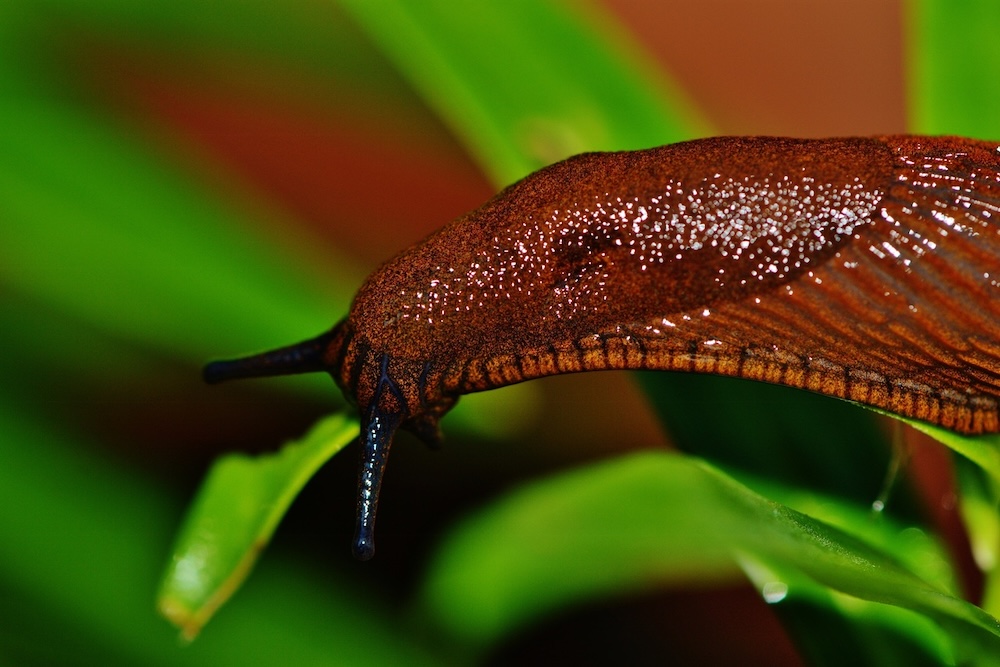
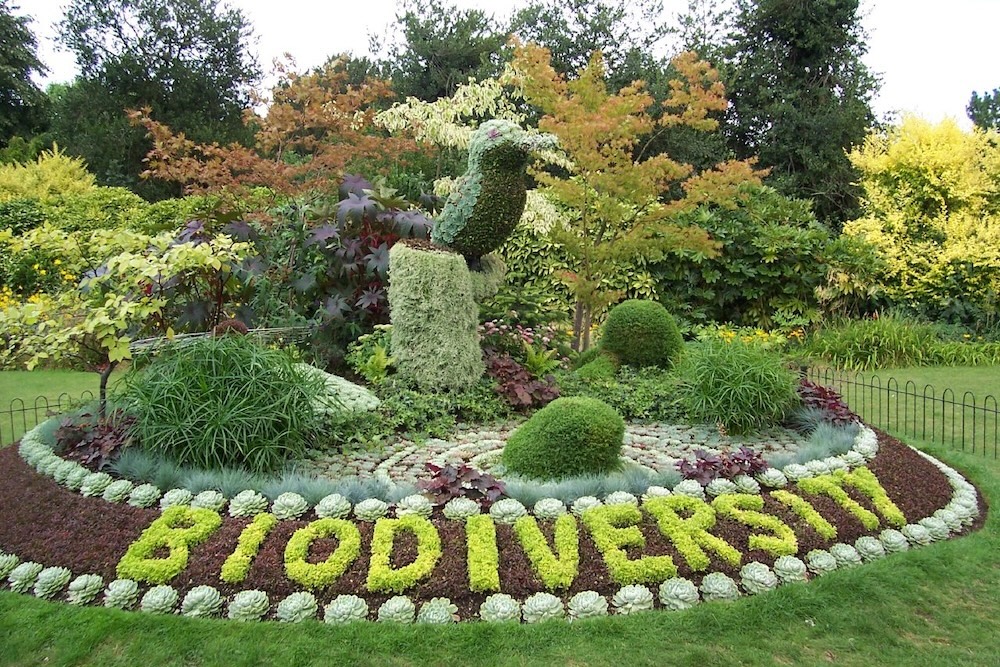
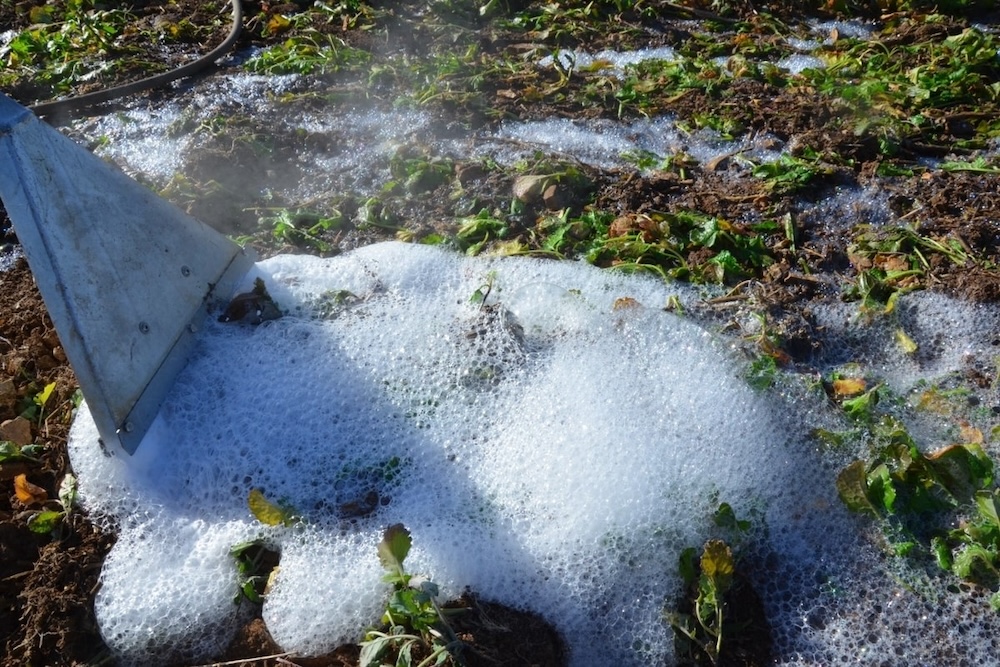
This Post Has 0 Comments